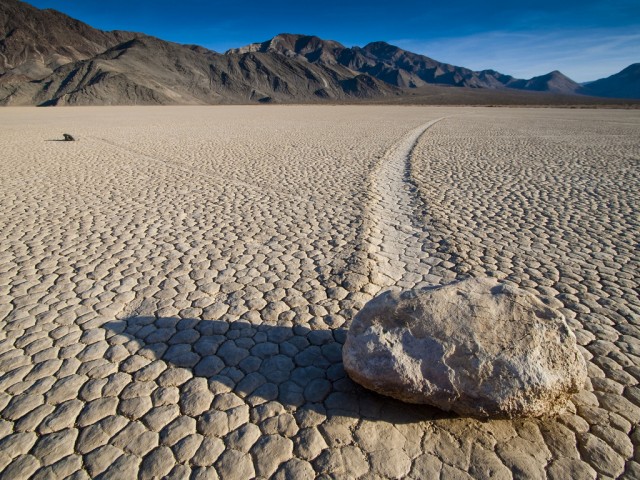Death Valley’s famous moving stones, caught in the act
Ars Technica » Scientific Method 2014-09-02
Mario is just a video game, and rocks don’t have legs. Both of these things are true. Yet, like the Mario ghosts that advance only when your back is turned, there are rocks that we know have been moving—even though no one has ever seen them do it.
The rocks in question occupy a spot called Racetrack Playa in Death Valley. Playas are desert mudflats that sometimes host shallow lakes when enough water is around. Racetrack Playa gets its name from long furrows extending from large rocks sitting on the playa bed—tracks that make it look as if the rocks had been dragged through the mud. The tracks of the various rocks run parallel to each other, sometimes suggesting that the rocks had made sharp turns in unison, like dehydrated synchronize swimmers.
Many potential explanations have been offered up (some going back to the 1940s) for this bizarre situation, as the rocks seem to only move occasionally and had never been caught in the act. One thing everyone could agree on was that it must occur when the playa is wet and the muddy bottom is slick. At first, suggestions revolved around especially strong winds. One geologist went as far as to bring out a propeller airplane to see how much wind it would take.
Read 9 remaining paragraphs | Comments
